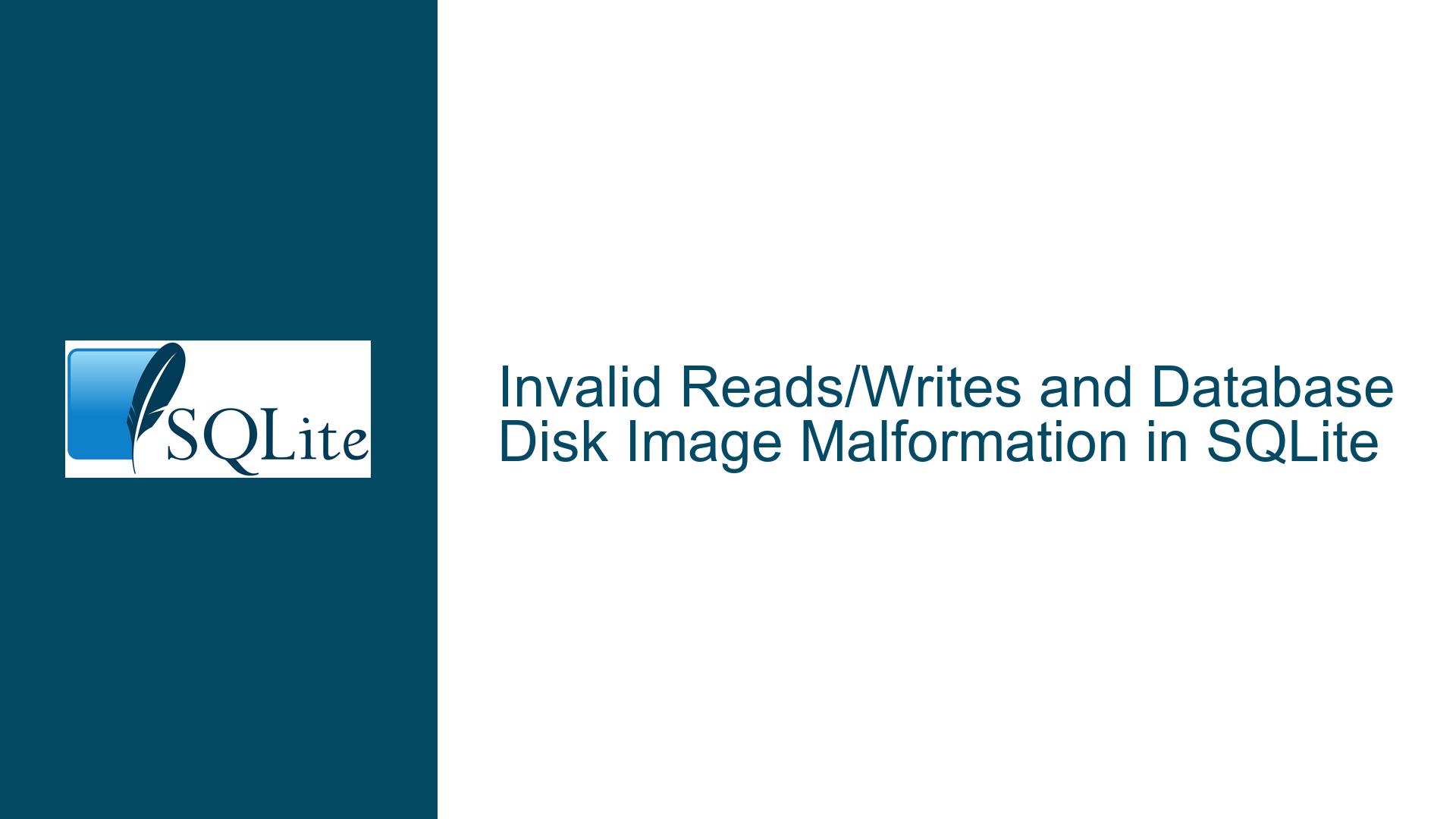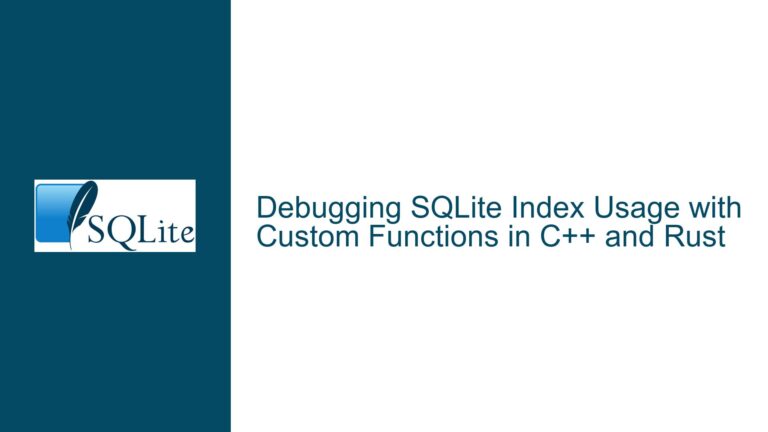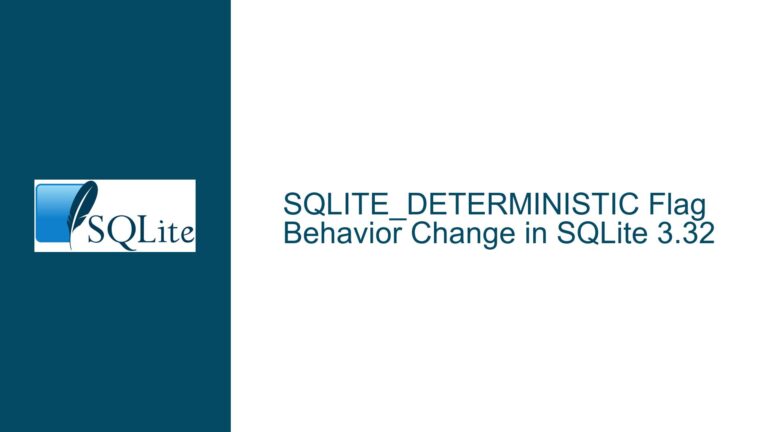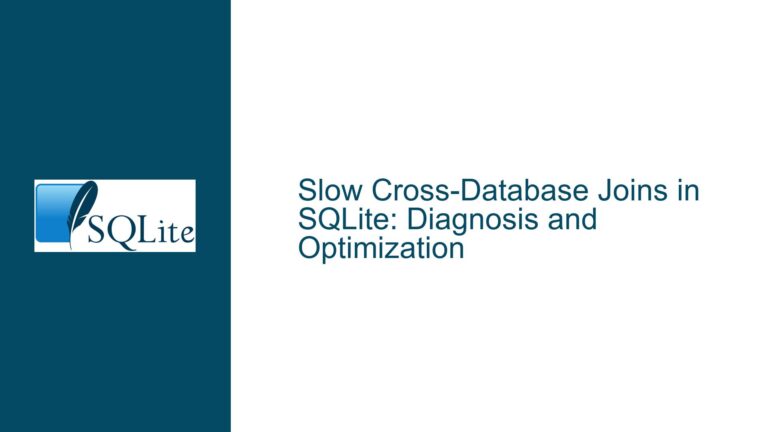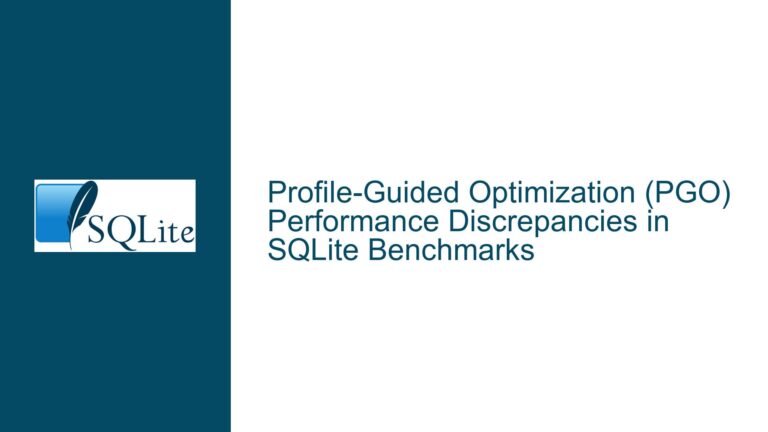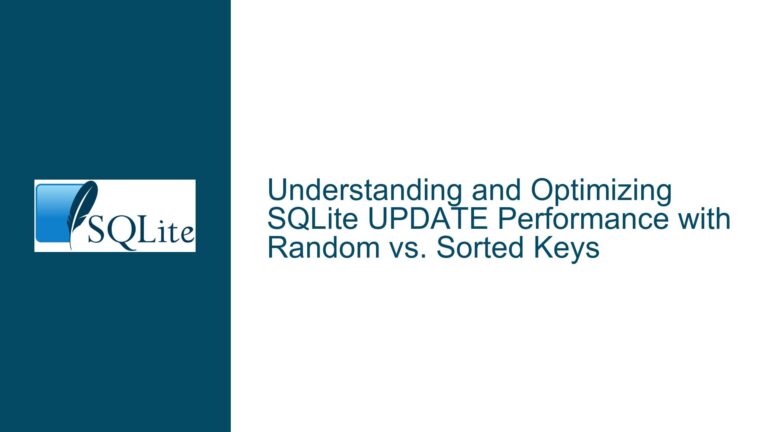Invalid Reads/Writes and Database Disk Image Malformation in SQLite
Memory Corruption Leading to Invalid Reads/Writes and Database Corruption
The core issue revolves around memory corruption in an SQLite application running on a Xilinx distribution of Linux. The application, when run under Valgrind, reports a series of invalid read and write operations, followed by errors indicating that the database disk image is malformed. These errors suggest that the database connection or the memory associated with it has been corrupted, even though the database itself passes an integrity check when examined using a tool like DB Browser for SQLite. This discrepancy indicates that the corruption is likely occurring in memory rather than on disk, which complicates the diagnosis and resolution process.
The invalid read and write operations are traced back to the getAndInitPage and sqlite3BtreeTableMoveto functions, which are part of SQLite’s internal mechanisms for managing database pages and B-tree structures. These functions are attempting to access memory that has already been freed, leading to undefined behavior. The errors are consistent with memory corruption, where a pointer is dereferenced after the memory it points to has been deallocated. This kind of issue can propagate through the application, causing further corruption and eventually leading to the "database disk image is malformed" error.
The database corruption error (errCode: 11) is a critical issue in SQLite, indicating that the database file on disk is not in a valid state. However, in this case, the integrity check suggests that the file itself is not corrupted, pointing instead to a problem with the in-memory representation of the database. This could be due to a bug in the application code, a misconfiguration in the SQLite library, or an issue with the underlying system libraries or hardware.
Potential Causes of Memory Corruption and Database Malformation
Several factors could contribute to the memory corruption and subsequent database malformation observed in this scenario. One possible cause is a bug in the application code that interacts with SQLite. If the application is improperly managing memory, such as by freeing memory that is still in use or by writing beyond the bounds of allocated memory, it could lead to the kind of invalid read and write operations seen here. This could be exacerbated by multi-threading issues, where concurrent access to shared memory is not properly synchronized, leading to race conditions and memory corruption.
Another potential cause is a bug or misconfiguration in the SQLite library itself. While SQLite is generally robust, it is not immune to bugs, especially in less common use cases or when running on specialized hardware like the Xilinx distribution of Linux. The version of SQLite being used (3.40.0) is relatively recent, and it is possible that there are undiscovered issues in this version that could lead to memory corruption under certain conditions. Additionally, if the SQLite library was compiled with non-standard options or linked against incompatible system libraries, it could introduce instability.
The underlying system environment could also be a factor. The Xilinx distribution of Linux may have differences in memory management or system libraries that could affect how SQLite operates. For example, if the system’s memory allocator behaves differently than expected, it could lead to memory corruption. Similarly, hardware issues, such as faulty RAM or storage media, could cause memory corruption that manifests as database errors.
Finally, the use of Valgrind itself could be a contributing factor. While Valgrind is an invaluable tool for detecting memory issues, it can also introduce overhead and alter the behavior of the application being tested. In some cases, this can lead to false positives or exacerbate existing issues. It is important to verify that the errors reported by Valgrind are reproducible without it, to ensure that they are not artifacts of the tool itself.
Diagnosing and Resolving Memory Corruption and Database Malformation
To address the issue of memory corruption and database malformation, a systematic approach is required. The first step is to isolate the problem by running the application without Valgrind to confirm that the errors are not artifacts of the tool. If the errors persist, the next step is to examine the application code for potential memory management issues. This includes checking for improper use of pointers, ensuring that memory is not freed prematurely, and verifying that all memory accesses are within bounds. Tools like AddressSanitizer can be helpful in identifying memory errors in the application code.
If the application code appears to be sound, the next step is to examine the SQLite library and its configuration. This includes verifying that the library was compiled with standard options and linked against compatible system libraries. If custom modifications were made to the SQLite source code, these should be reviewed for potential issues. It may also be helpful to test the application with a different version of SQLite to rule out version-specific bugs.
The system environment should also be scrutinized. This includes checking for hardware issues, such as faulty RAM or storage media, and ensuring that the system libraries are up to date and compatible with the version of SQLite being used. If the Xilinx distribution of Linux has known issues with memory management or system libraries, these should be addressed or worked around.
If the issue persists after these steps, it may be necessary to delve deeper into the SQLite internals. This could involve adding additional logging or debugging statements to the SQLite source code to trace the flow of execution and identify where the memory corruption is occurring. This is a more advanced step and requires a good understanding of SQLite’s internal architecture.
In some cases, the issue may be related to multi-threading. If the application uses multiple threads to access the database, it is important to ensure that all accesses are properly synchronized. SQLite provides mechanisms for thread-safe operation, but these must be used correctly to avoid race conditions and memory corruption. Reviewing the application’s threading model and ensuring that all database accesses are properly protected by mutexes or other synchronization primitives can help resolve these issues.
Finally, if all else fails, it may be necessary to seek help from the SQLite community or the developers of the Xilinx distribution of Linux. Providing a detailed description of the issue, along with any relevant logs or code snippets, can help others diagnose the problem and suggest potential solutions. In some cases, the issue may be a known bug with a workaround or fix available.
In conclusion, memory corruption leading to invalid reads/writes and database malformation is a complex issue that requires a thorough and methodical approach to diagnose and resolve. By systematically examining the application code, SQLite library, system environment, and threading model, it is possible to identify the root cause of the issue and implement a solution that restores the stability and integrity of the database.
